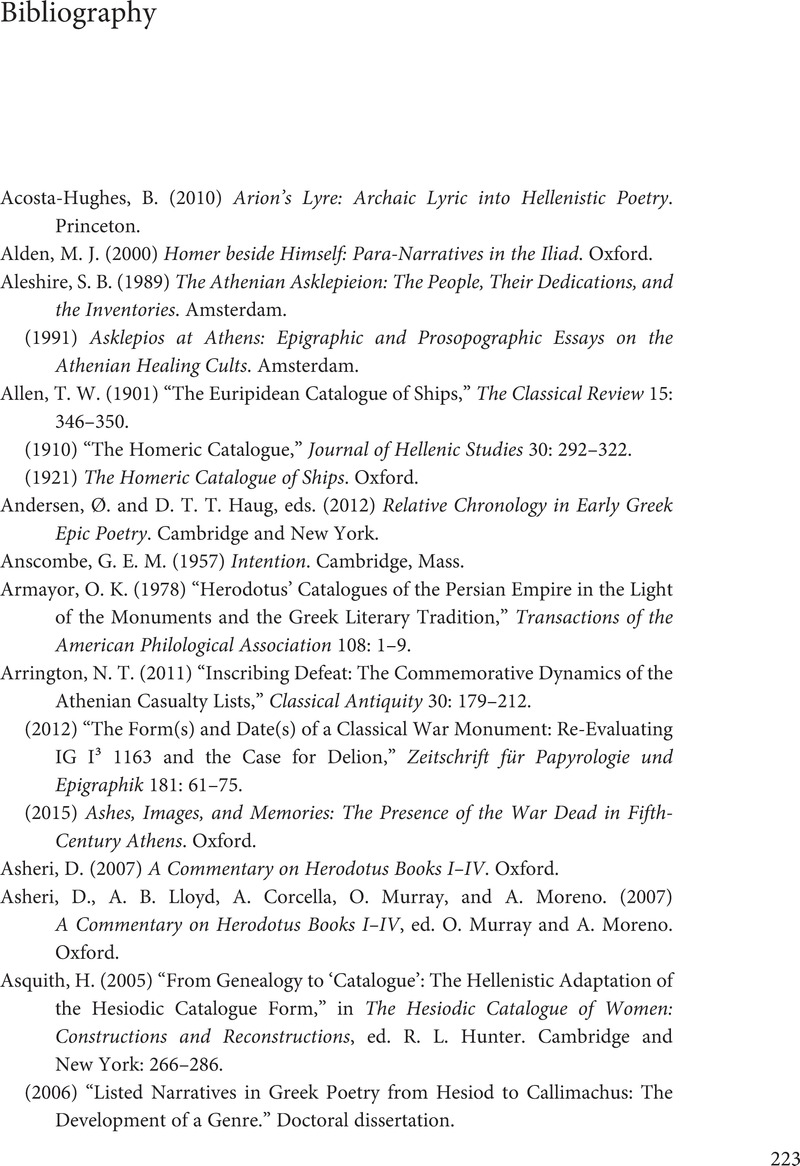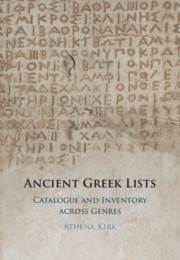Book contents
- Ancient Greek Lists
- Ancient Greek Lists
- Copyright page
- Dedication
- Contents
- Figures
- Acknowledgements
- Abbreviations
- Introduction: The Tally of Text
- 1 A Number of Things
- 2 “Or Such a Woman as…”
- 3 Displaying the Past
- 4 Stone Treasuries
- 5 Citizens Who Count
- 6 Unified Infinities, Catalogic Chronotopes
- 7 Conclusion and Epilogue
- Bibliography
- Index Locorum
- General Index
- References
Bibliography
Published online by Cambridge University Press: 05 March 2021
- Ancient Greek Lists
- Ancient Greek Lists
- Copyright page
- Dedication
- Contents
- Figures
- Acknowledgements
- Abbreviations
- Introduction: The Tally of Text
- 1 A Number of Things
- 2 “Or Such a Woman as…”
- 3 Displaying the Past
- 4 Stone Treasuries
- 5 Citizens Who Count
- 6 Unified Infinities, Catalogic Chronotopes
- 7 Conclusion and Epilogue
- Bibliography
- Index Locorum
- General Index
- References
Summary

- Type
- Chapter
- Information
- Ancient Greek ListsCatalogue and Inventory Across Genres, pp. 223 - 245Publisher: Cambridge University PressPrint publication year: 2021



